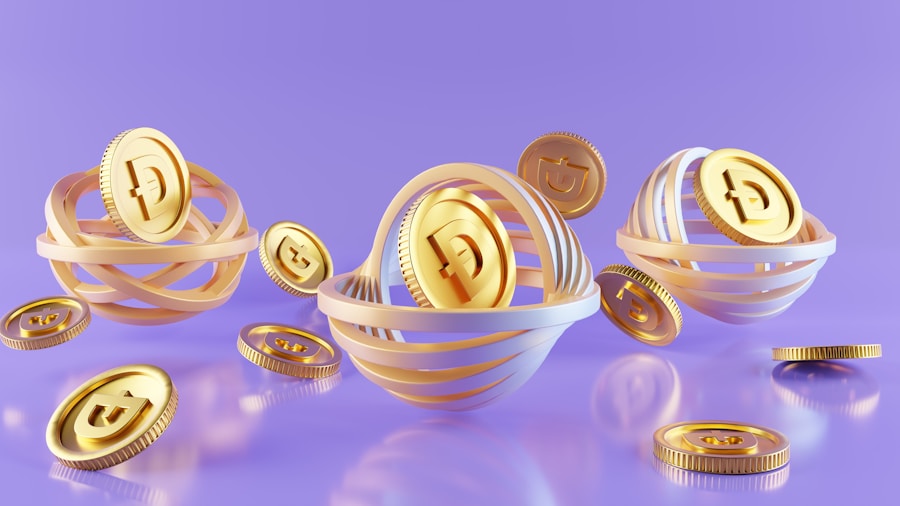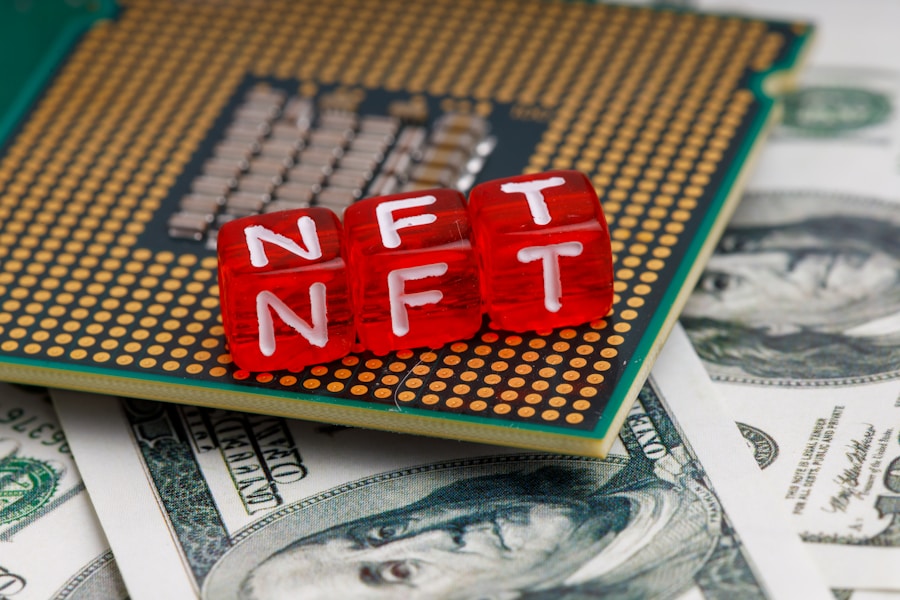Utherverse Crypto is a virtual currency that has gained significant attention in recent years. As the world becomes increasingly digital, the importance of virtual currency cannot be overstated. Virtual currency allows for seamless transactions in virtual environments, providing users with a convenient and secure way to engage in online activities. Utherverse Crypto is one such virtual currency that has emerged as a game-changer in both the virtual and real worlds.
Understanding the Concept of Virtual Currency
Virtual currency refers to a type of digital currency that is used in virtual environments, such as online games and virtual worlds. It is not issued or regulated by any central authority, such as a government or financial institution. Instead, virtual currency operates on decentralized networks, typically using blockchain technology.
There are various types of virtual currency, including in-game currencies, social media currencies, and cryptocurrencies. In-game currencies are used within specific online games to purchase virtual goods and services. Social media currencies, on the other hand, are used on social media platforms to reward users for their engagement and participation. Cryptocurrencies, like Utherverse Crypto, are digital currencies that can be used for a wide range of online transactions.
Virtual currency works by utilizing cryptographic technology to secure transactions and control the creation of new units. Transactions made with virtual currency are recorded on a public ledger called a blockchain, which ensures transparency and prevents fraud. Users can store their virtual currency in digital wallets and use it to make purchases or exchange it for other currencies.
The Significance of Utherverse Crypto in the Virtual World
Utherverse Crypto is primarily used within the Utherverse platform, a virtual world that allows users to create avatars and interact with others in a 3D environment. Within this virtual world, Utherverse Crypto serves as the primary form of currency for buying virtual goods and services.
One of the key benefits of using Utherverse Crypto in the virtual world is the ability to make secure and anonymous transactions. Users can buy virtual items, such as clothing or furniture, without revealing their personal information. This provides a level of privacy and security that is not always possible with traditional payment methods.
Additionally, Utherverse Crypto offers a range of benefits for users in the virtual world. It allows for faster and more efficient transactions, as there are no intermediaries involved. Users can also earn Utherverse Crypto by participating in various activities within the virtual world, such as completing quests or selling virtual goods. This creates a dynamic economy within the virtual world and provides users with opportunities to earn and spend Utherverse Crypto.
The Emergence of Utherverse Crypto in the Real World
While Utherverse Crypto is primarily used within the virtual world, it is also gaining traction in the real world. There are a growing number of businesses that accept Utherverse Crypto as a form of payment for goods and services.
For example, some online retailers now accept Utherverse Crypto as a payment option. This allows users to purchase real-world products using their virtual currency. Additionally, there are platforms that allow users to exchange Utherverse Crypto for other cryptocurrencies or traditional fiat currencies.
The acceptance of Utherverse Crypto in the real world highlights its potential as a viable form of currency beyond the virtual realm. As more businesses recognize the benefits of accepting virtual currencies, we can expect to see further integration of Utherverse Crypto into everyday transactions.
The Benefits of Using Utherverse Crypto for Online Transactions
Using Utherverse Crypto for online transactions offers several advantages over traditional payment methods.
One of the key benefits is enhanced security and privacy. When making transactions with Utherverse Crypto, users do not need to provide their personal information, such as credit card details or billing addresses. This reduces the risk of identity theft and fraud.
Additionally, using Utherverse Crypto for online transactions often incurs lower fees compared to traditional payment methods. This is because there are no intermediaries involved, such as banks or payment processors, which typically charge transaction fees. As a result, users can save money on transaction costs.
Furthermore, Utherverse Crypto offers faster transaction times compared to traditional payment methods. Transactions made with Utherverse Crypto are processed almost instantly, eliminating the need for lengthy processing times and delays.
How Utherverse Crypto is Different from Other Cryptocurrencies
Utherverse Crypto has several unique features that set it apart from other cryptocurrencies.
One of the key features of Utherverse Crypto is its integration with the Utherverse platform. While other cryptocurrencies can be used for a wide range of online transactions, Utherverse Crypto is specifically designed for use within the Utherverse virtual world. This specialization allows for seamless integration and enhanced functionality within the platform.
Another unique feature of Utherverse Crypto is its focus on user engagement and participation. Users can earn Utherverse Crypto by completing quests, participating in events, or selling virtual goods. This creates a dynamic economy within the virtual world and provides users with opportunities to earn and spend Utherverse Crypto.
In terms of comparison with other popular cryptocurrencies, Utherverse Crypto offers similar benefits in terms of security, privacy, and efficiency. However, its specialization within the Utherverse platform sets it apart from other cryptocurrencies that have a broader scope of use.
The Role of Blockchain Technology in Utherverse Crypto
Blockchain technology plays a crucial role in the operation of Utherverse Crypto.
The blockchain is a decentralized ledger that records all transactions made with Utherverse Crypto. It ensures transparency and prevents fraud by providing a public record of all transactions. This allows users to verify the authenticity of transactions and ensures that no one can manipulate the system.
Additionally, blockchain technology provides enhanced security for Utherverse Crypto. Transactions made with Utherverse Crypto are secured using cryptographic algorithms, making it virtually impossible for hackers to tamper with the transaction data.
Furthermore, blockchain technology enables faster and more efficient transactions. Since there are no intermediaries involved, transactions can be processed almost instantly, eliminating the need for lengthy processing times and delays.
The Future of Utherverse Crypto: Potential Applications and Developments
The future of Utherverse Crypto holds great potential for further integration into both the virtual and real worlds.
In the virtual world, Utherverse Crypto could be used for a wide range of applications. For example, it could be used to purchase virtual real estate, attend virtual events, or access premium content within the Utherverse platform. This would create new opportunities for users to engage with the virtual world and enhance their overall experience.
In the real world, Utherverse Crypto could be accepted by more businesses as a form of payment. This would provide users with more options for spending their virtual currency and further bridge the gap between the virtual and real worlds.
Additionally, there are ongoing developments and updates to improve the functionality and usability of Utherverse Crypto. These developments aim to enhance user experience, increase security measures, and expand the range of applications for Utherverse Crypto.
Risks and Challenges Associated with Utherverse Crypto
While Utherverse Crypto offers numerous benefits, there are also risks and challenges associated with its use.
One of the main risks is security. As with any digital currency, there is a risk of hacking or theft. Users must take precautions to secure their Utherverse Crypto wallets and ensure that they are using reputable platforms for transactions.
Another challenge is the volatility of cryptocurrency markets. The value of Utherverse Crypto can fluctuate significantly, which can impact its purchasing power in both the virtual and real worlds. Users must be aware of these fluctuations and consider them when making transactions.
Furthermore, there are regulatory challenges associated with virtual currencies. As virtual currencies gain popularity, governments around the world are developing regulations to govern their use. Users must stay informed about the legal and regulatory landscape to ensure compliance and avoid any potential legal issues.
How to Get Started with Utherverse Crypto: A Step-by-Step Guide
Getting started with Utherverse Crypto is relatively straightforward. Here is a step-by-step guide:
1. Create a Utherverse Crypto wallet: Choose a reputable wallet provider and create an account. This will serve as your digital wallet for storing and managing your Utherverse Crypto.
2. Buy Utherverse Crypto: Once you have a wallet, you can purchase Utherverse Crypto from a reputable exchange or marketplace. Follow the instructions provided by the platform to complete the purchase.
3. Secure your wallet: Take steps to secure your Utherverse Crypto wallet, such as enabling two-factor authentication and using strong passwords. This will help protect your virtual currency from unauthorized access.
4. Start using Utherverse Crypto: Once you have Utherverse Crypto in your wallet, you can start using it for online transactions within the Utherverse platform or at businesses that accept Utherverse Crypto.
It is important to note that users should exercise caution when buying and selling Utherverse Crypto. Only use reputable platforms and be mindful of potential scams or fraudulent activities.
Utherverse Crypto as a Game-Changer in the Virtual and Real Worlds
In conclusion, Utherverse Crypto has emerged as a game-changer in both the virtual and real worlds. Its integration within the Utherverse platform provides users with a convenient and secure way to engage in online activities within the virtual world. Additionally, its acceptance in the real world highlights its potential as a viable form of currency beyond virtual environments.
The benefits of using Utherverse Crypto for online transactions are numerous, including enhanced security and privacy, lower transaction fees, and faster transaction times. Its unique features and specialization within the Utherverse platform set it apart from other cryptocurrencies.
While there are risks and challenges associated with Utherverse Crypto, its future holds great potential for further integration and development. As more businesses accept Utherverse Crypto and new applications are developed, we can expect to see increased adoption and usage of this virtual currency. Overall, Utherverse Crypto is poised to revolutionize the way we engage in online transactions in both the virtual and real worlds.









